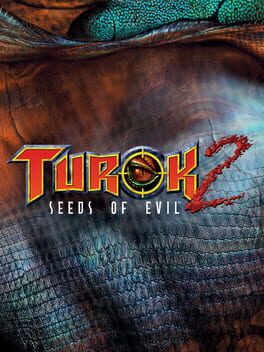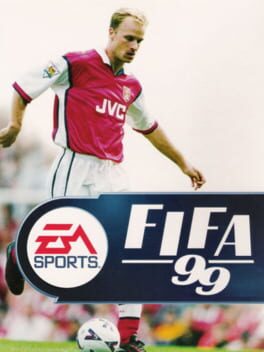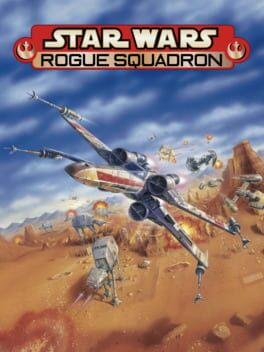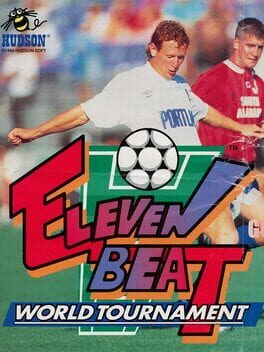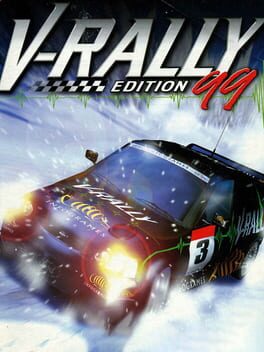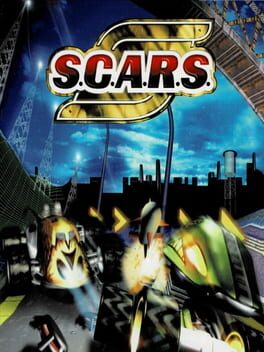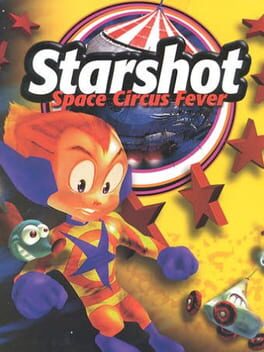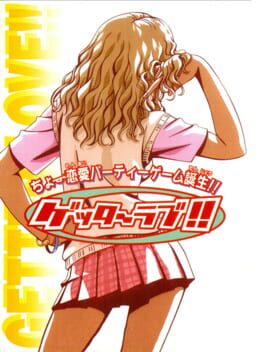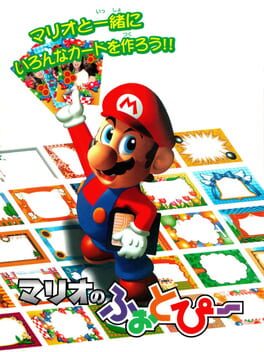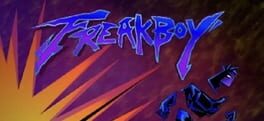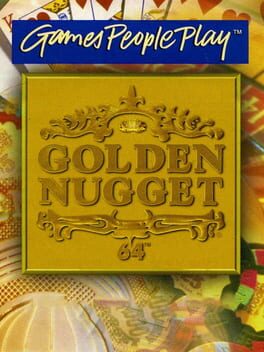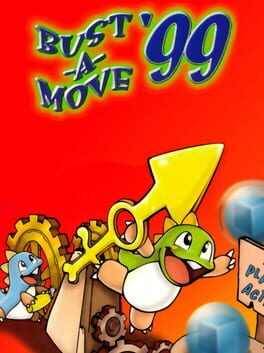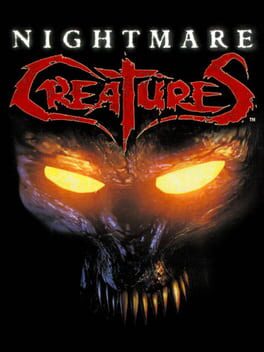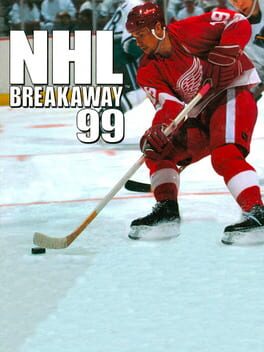Cube1701
Turok makes a return, and in this one Iguana seemed to have listened to some complaints of the first one and paid some attention to GoldenEye. Some of these changes work and some don’t. Once again, I’m playing the wonderful remaster from Nightdrive.
The first Turok feels like a first person collect-a-thon platformer. Even through controlling yourself mid-air feels a lot more precise, there are very few platforming segments in the game. The keys that were hidden in tiny nooks and crannies are now mostly on the main path of the level.
The level design is also very different. The first felt much more open, while this feels like a series of overly long corridors, with a few confusing mazes here and there. Large chunks of the level also seem to repeat a lot and every level grows tiresome long before you get to the end of it. Turok 2 really needed shorter levels, but more of them.
The levels do feel far more distinct than the first game, each having their own look and style. They just seem to have been made incredibly long just to pad out the game.
To counter the levels feeling like corridors, you also have objectives (such as rescuing some immensely scary children), which go too far in the other direction. If you reach the end of the level without completing these objectives, you’ll be told you’ve failed and be sent back to the start. Thankfully, your progress is kept.
The first level purposefully sets you up to fail. There are three distress beacons you need to power up with fuel cells. The first will be one of the first things you find in the game, but with no power cell. You’ll find the three power cells you need near the end of the level, right next to the other beacons. Other objectives are also extremely well hidden – more so than the majority of secrets in the game. This would be fine in smaller levels, but incredibly tedious in these levels, especially the ones that are a nightmare to navigate backwards in.
One thing Turok 2 has improved upon is the weapons. They were great in the first game, and even better here. Many are fun to use, including a powerful shotgun that shoots bouncing bullets, and one of the final ones in the game is famous for the spectacle it creates: it homes in on brains and drills into them, causing massive amount of blood. It only works on enemies that have some intelligence, though.
The guns do alleviate the tedium of the levels somewhat, with really good enemy variety throughout the levels – although I wish we had some more dinosaurs. Another notable thing in this game is the lack of human enemies.
Turok 2 is a lot of fun to play, but each level gets dull long before it finishes. There’s even a segment where you get to ride a dinosaur with massive guns and it’s great fun for a bit, but you’re just waiting for it to end half way through. It pads things out a bit too much.
The first Turok feels like a first person collect-a-thon platformer. Even through controlling yourself mid-air feels a lot more precise, there are very few platforming segments in the game. The keys that were hidden in tiny nooks and crannies are now mostly on the main path of the level.
The level design is also very different. The first felt much more open, while this feels like a series of overly long corridors, with a few confusing mazes here and there. Large chunks of the level also seem to repeat a lot and every level grows tiresome long before you get to the end of it. Turok 2 really needed shorter levels, but more of them.
The levels do feel far more distinct than the first game, each having their own look and style. They just seem to have been made incredibly long just to pad out the game.
To counter the levels feeling like corridors, you also have objectives (such as rescuing some immensely scary children), which go too far in the other direction. If you reach the end of the level without completing these objectives, you’ll be told you’ve failed and be sent back to the start. Thankfully, your progress is kept.
The first level purposefully sets you up to fail. There are three distress beacons you need to power up with fuel cells. The first will be one of the first things you find in the game, but with no power cell. You’ll find the three power cells you need near the end of the level, right next to the other beacons. Other objectives are also extremely well hidden – more so than the majority of secrets in the game. This would be fine in smaller levels, but incredibly tedious in these levels, especially the ones that are a nightmare to navigate backwards in.
One thing Turok 2 has improved upon is the weapons. They were great in the first game, and even better here. Many are fun to use, including a powerful shotgun that shoots bouncing bullets, and one of the final ones in the game is famous for the spectacle it creates: it homes in on brains and drills into them, causing massive amount of blood. It only works on enemies that have some intelligence, though.
The guns do alleviate the tedium of the levels somewhat, with really good enemy variety throughout the levels – although I wish we had some more dinosaurs. Another notable thing in this game is the lack of human enemies.
Turok 2 is a lot of fun to play, but each level gets dull long before it finishes. There’s even a segment where you get to ride a dinosaur with massive guns and it’s great fun for a bit, but you’re just waiting for it to end half way through. It pads things out a bit too much.
1998
While a lot of sports games, even in the N64 era, feel like iterations of the same game, the FIFA games on N64 are surprisingly distinct. While, FIFA 64 was such a mess that FIFA 98 definitely needed to bring massive improvements, they could have easily have gotten away with updating the 98 roster and releasing the game. I can definitely commend them for not doing that, even if I don’t like the result.
The biggest difference to how the game plays is the tackling. It’s good. Too good, in fact. Almost every tackle in the game is successful, making the game go back and forth constantly. This makes passing all the more important, but the reliance on passing makes it even more obvious that your computer-controlled teammates are terrible at getting into position.
The really fun indoor pitch is also gone now, and the whole aesthetic of the game – even the menus – comes across as more mundane. This feels like a big step back to me, even if it is better from a technical standpoint.
The biggest difference to how the game plays is the tackling. It’s good. Too good, in fact. Almost every tackle in the game is successful, making the game go back and forth constantly. This makes passing all the more important, but the reliance on passing makes it even more obvious that your computer-controlled teammates are terrible at getting into position.
The really fun indoor pitch is also gone now, and the whole aesthetic of the game – even the menus – comes across as more mundane. This feels like a big step back to me, even if it is better from a technical standpoint.
Rogue Squadron was my second N64 game. My mum was also talked into buying an expansion Pak with it, as it would produce better graphics. For this replay, I was expecting to use the PC version, but it turned out to be a colossal pain – running it in a higher resolution produces bugs, and the widescreen “fixes” just stretch the screen instead of actually being widescreen (the N64 hacks seem to do the same), and it can’t detect modern controllers at all – so really, it’s much easier (and nicer) to emulate the N64 version on PC than to use the PC version.
Rogue Squadron is a ship combat game, but goes for controls that are much easier to get to grips with than the more simulation-like X-Wing/TIE Fighter series. Up close, the graphics look great on the N64, with the ships recreated in a lot of detail and varied planets to visit.
At a distance, though, and no graphics exist. As a result, the game has heavy usage of fog (this is partly why nobody can get widescreen to properly work – the game is unloading stuff as soon as it moves out of view). The darker levels and snow levels get away with this really well, as the fog looks much more natural, but on other levels it really does look out of place.
There are a great amount of missions, following a rough story as Rogue Squadron deals with the ruthless Moff Seerdon, with voice acting before, after and during missions. While the levels designs are a quite varied, I really don’t remember Rogue Squadron having this many escort missions, as you protect various targets from the imperials, particularly TIE Bombers.
There are some missions where you get to go on the offensive – including using the Y-Wing to blow up massive complexes, and these ones are a ton of fun, and they mostly make up for the escort ones. They wouldn’t be so bad if it didn’t feel like everything you were protecting was incredibly weak (and you can’t see their health), or if enemy ships were easier to see (something that would be rectified in the sequel).
There are a good amount of bonuses. You can unlock more ships to replay previous missions with, including the Millennium Falcon, and bonus levels that require you to master the game to perfection (or use cheats to unlock), which lets you play the Death Star trench run and the Battle of Hoth, the latter being the final thing is curious as it was the start of Empire at War.
One impressive unlockable was the Naboo Starfighter, which remained hidden in the game until a code to unlock it was released when Episode 1 came out. Such a thing would need to be DLC these days, as people would locate it in the game files straight away.
Rogue Squadron is a really good game, but the amount of escort missions lets it down. A few of the levels were much more memorable to me, and it was all of the missions that don’t require you to protect others. It’s still a highly enjoyable game overall, but it has the disadvantage of tis sequel improving upon it in every single way.
Rogue Squadron is a ship combat game, but goes for controls that are much easier to get to grips with than the more simulation-like X-Wing/TIE Fighter series. Up close, the graphics look great on the N64, with the ships recreated in a lot of detail and varied planets to visit.
At a distance, though, and no graphics exist. As a result, the game has heavy usage of fog (this is partly why nobody can get widescreen to properly work – the game is unloading stuff as soon as it moves out of view). The darker levels and snow levels get away with this really well, as the fog looks much more natural, but on other levels it really does look out of place.
There are a great amount of missions, following a rough story as Rogue Squadron deals with the ruthless Moff Seerdon, with voice acting before, after and during missions. While the levels designs are a quite varied, I really don’t remember Rogue Squadron having this many escort missions, as you protect various targets from the imperials, particularly TIE Bombers.
There are some missions where you get to go on the offensive – including using the Y-Wing to blow up massive complexes, and these ones are a ton of fun, and they mostly make up for the escort ones. They wouldn’t be so bad if it didn’t feel like everything you were protecting was incredibly weak (and you can’t see their health), or if enemy ships were easier to see (something that would be rectified in the sequel).
There are a good amount of bonuses. You can unlock more ships to replay previous missions with, including the Millennium Falcon, and bonus levels that require you to master the game to perfection (or use cheats to unlock), which lets you play the Death Star trench run and the Battle of Hoth, the latter being the final thing is curious as it was the start of Empire at War.
One impressive unlockable was the Naboo Starfighter, which remained hidden in the game until a code to unlock it was released when Episode 1 came out. Such a thing would need to be DLC these days, as people would locate it in the game files straight away.
Rogue Squadron is a really good game, but the amount of escort missions lets it down. A few of the levels were much more memorable to me, and it was all of the missions that don’t require you to protect others. It’s still a highly enjoyable game overall, but it has the disadvantage of tis sequel improving upon it in every single way.
In July 1998, the first arcade game on the Aleck 64 arcade cabinet. This cabinet was built by Seta using the Nintendo 64 as a basis – the only hardware difference is a bit of extra RAM. Technically, these games will boot up on a regular N64 (with a bit of soldering the ROM chip into a standard cartridge), but it won’t recognise a controller – a clever hacker, however, has alerted the games to run on N64 hardware, so I’ll be including these as these are official games running on N64-based hardware.
There were 10 games made using the Aleck 64 arcade cabinet, with a few more planned (a few prototypes have cropped up, but not being made publicly available), with two games (such as Star Soldier: Vanishing Earth) being ported to the N64 itself. One of the first games was Eleven Beat World Tournament.
This is an updated version of J.League Eleven Beat, featuring international teams. The gameplay is similar, but feels more refined, feeling smoother and more accurate. It’s a decent football game, if nothing special.
You can either enter a tournament where you’ll play against a few (rather difficult) CPU opponents using a credit each time you lose, or play a friendly match with a friend. Quite simple options, but exactly what is needed for an arcade game.
There were 10 games made using the Aleck 64 arcade cabinet, with a few more planned (a few prototypes have cropped up, but not being made publicly available), with two games (such as Star Soldier: Vanishing Earth) being ported to the N64 itself. One of the first games was Eleven Beat World Tournament.
This is an updated version of J.League Eleven Beat, featuring international teams. The gameplay is similar, but feels more refined, feeling smoother and more accurate. It’s a decent football game, if nothing special.
You can either enter a tournament where you’ll play against a few (rather difficult) CPU opponents using a credit each time you lose, or play a friendly match with a friend. Quite simple options, but exactly what is needed for an arcade game.
1999
As I’ve mentioned in previous reviews, the more realistic racing games have not as aged as well as arcade ones, as car physics in games have become more accurate and the graphics more detailed. Plus it’s not a racing genre that I’m particularly into. That said, I can see why N64 Magazine would this game an impressive 90%, even if it not for me.
The graphics are very impressive for the N64, with the road itself having a lot of detail, cars that don’t look like boxes and good trackside detail. The weather is impressive as well, with one of the England tracks having fog, the alps having snow and some tracks (including one of the other England tracks) having some very impressive rain.
N64 games usually show rain by having a texture in front of the camera, but the rain in V-Rally moves towards the camera, making it look like you really are driving into it, so the effect is unlike what has been seen on the N64 prior to V-Rally. And on top of that, it offers its own native widescreen.
There are three main modes. Arcade is a race with a checkpoint (which can be turned off with a cheat), but it’s a proper race with racers that start alongside you. This takes place on full circuits, doing multiple laps.
Championship mode is a more rally-like “A to B” race format, with the default option here being racing on your own, but against the times of other racers. If you want a bit more action, though, you can chance the setting to “V-rally”, you can do this races, but at the same time as the other racers.
The tracks themselves are also very impressive. They take place across various countries, each providing a different kind of road surface and background design, making each area look very distinct. On top of that, each area has multiple tracks so even if you’re going back to the same location, there’s still variants of them.
I can see why N64 gamers would be very impressed by V-Rally. It produces some great visuals from the N64, has way more than the usual 5 or 6 tracks and provides a surprising amount of variety in terms of how the tracks look.
The graphics are very impressive for the N64, with the road itself having a lot of detail, cars that don’t look like boxes and good trackside detail. The weather is impressive as well, with one of the England tracks having fog, the alps having snow and some tracks (including one of the other England tracks) having some very impressive rain.
N64 games usually show rain by having a texture in front of the camera, but the rain in V-Rally moves towards the camera, making it look like you really are driving into it, so the effect is unlike what has been seen on the N64 prior to V-Rally. And on top of that, it offers its own native widescreen.
There are three main modes. Arcade is a race with a checkpoint (which can be turned off with a cheat), but it’s a proper race with racers that start alongside you. This takes place on full circuits, doing multiple laps.
Championship mode is a more rally-like “A to B” race format, with the default option here being racing on your own, but against the times of other racers. If you want a bit more action, though, you can chance the setting to “V-rally”, you can do this races, but at the same time as the other racers.
The tracks themselves are also very impressive. They take place across various countries, each providing a different kind of road surface and background design, making each area look very distinct. On top of that, each area has multiple tracks so even if you’re going back to the same location, there’s still variants of them.
I can see why N64 gamers would be very impressed by V-Rally. It produces some great visuals from the N64, has way more than the usual 5 or 6 tracks and provides a surprising amount of variety in terms of how the tracks look.
1998
SCARS stands for Super Computer Animal Racing Simulator. While it does seem like a random assortment of words to spell a “cool” word, the game is built around the concept of a computer simulation (the tracks load in a wireframe before loading textures) and the cars are all based on animals. It’s a silly concept, but it captures what the game is about: fun.
As a kart-like racing game, SCARS has really good handling, drifting is simple to pull off, letting you slide around corners with ease. Driving in SCARS is a ton of fun, as is zipping around all of the levels.
The levels themselves have some neat ideas, such as an island with a volcano, a level that takes place during UFOs attacking in the 1950s and an underwater level. Due to the “simulation” nature, they were free with picking odd and wonderful designs.
The weapons are quite interesting, too. You can send weapons forwards or backwards, and hold down the fire button to apply extra power. They mainly hinder people for a short time, however the cars can jump to dodge them. The icons are also quite clear, so you can plan what to collect from the upcoming set to get ahead or to defend your position.
This is a game I vaguely saw in N64 magazine and haven’t heard people talked about, so I was pleasantly surprised about how much I enjoyed it. It’s good, clean fun.
As a kart-like racing game, SCARS has really good handling, drifting is simple to pull off, letting you slide around corners with ease. Driving in SCARS is a ton of fun, as is zipping around all of the levels.
The levels themselves have some neat ideas, such as an island with a volcano, a level that takes place during UFOs attacking in the 1950s and an underwater level. Due to the “simulation” nature, they were free with picking odd and wonderful designs.
The weapons are quite interesting, too. You can send weapons forwards or backwards, and hold down the fire button to apply extra power. They mainly hinder people for a short time, however the cars can jump to dodge them. The icons are also quite clear, so you can plan what to collect from the upcoming set to get ahead or to defend your position.
This is a game I vaguely saw in N64 magazine and haven’t heard people talked about, so I was pleasantly surprised about how much I enjoyed it. It’s good, clean fun.
Starshot looks like a fun game. It has a very whacky story and fun looking characters. You play as Starshot, designed to be an emotionless super soldier but he gained a conscience and joined a struggling space circus. They need to put on the show of a lifetime in order to pay off the bank, or else they’ll all blow up.
Travelling across multiple planets to find some interesting “exhibits”, the underappreciated Starshot, with the help of Willfly and Willfall, is tasked to do all the hard work.
With some fun levels and decent platforming, this would be an enjoyable romp. Sadly, this isn’t the case. The platforming is extremely rough. Starshot’s acrobatic jump doesn’t feel natural and it’s extremely difficult to judge its distance – he’ll fall down a lot of bottomless pits because you thought you were above a platform.
The frameratre is also over the place, so many of your jumps will be further ruined by the game slowing down and messing with how long you need to hold forwards more. Most of the death feel like the game’s fault. Surprisingly, Starshot is one of the few N64 games that offers proper widescreen.
While the levels are interesting in terms of theme – and some have interesting backstory to them, the level design itself is atrocious, mostly comprising of long, thin platforms across bottomless pits. None of the levels are fun to navigate, to the point where it’s best to get as many fuel tokens as possible and use Willfall (your little rocket robot) to fly and skip as much as you can.
And I haven’t even talked about the camera. It starts out promising, as you can freely move the camera and even set the distance you want. If it stuck like this, it would be fine, but the camera constantly attempts to get into a “better” position and this throws off your movement even more. While in an indoor area, it swings about widely and you can never see what you want to look at, with enemies right in front of you being off-screen.
It really is a shame as there is a lot that I would enjoy about the game if the core mechanics simply worked. The objectives are silly in a fun way, and some of the details – such as why everyone on Earth was wiped out – are great. The ending is pretty horrible, (being a sequel bait when they had no intention of making a sequel), and jumping in the final level results in instant death, but there are plenty of nice ideas throughout the game – just none of them executed well.
Travelling across multiple planets to find some interesting “exhibits”, the underappreciated Starshot, with the help of Willfly and Willfall, is tasked to do all the hard work.
With some fun levels and decent platforming, this would be an enjoyable romp. Sadly, this isn’t the case. The platforming is extremely rough. Starshot’s acrobatic jump doesn’t feel natural and it’s extremely difficult to judge its distance – he’ll fall down a lot of bottomless pits because you thought you were above a platform.
The frameratre is also over the place, so many of your jumps will be further ruined by the game slowing down and messing with how long you need to hold forwards more. Most of the death feel like the game’s fault. Surprisingly, Starshot is one of the few N64 games that offers proper widescreen.
While the levels are interesting in terms of theme – and some have interesting backstory to them, the level design itself is atrocious, mostly comprising of long, thin platforms across bottomless pits. None of the levels are fun to navigate, to the point where it’s best to get as many fuel tokens as possible and use Willfall (your little rocket robot) to fly and skip as much as you can.
And I haven’t even talked about the camera. It starts out promising, as you can freely move the camera and even set the distance you want. If it stuck like this, it would be fine, but the camera constantly attempts to get into a “better” position and this throws off your movement even more. While in an indoor area, it swings about widely and you can never see what you want to look at, with enemies right in front of you being off-screen.
It really is a shame as there is a lot that I would enjoy about the game if the core mechanics simply worked. The objectives are silly in a fun way, and some of the details – such as why everyone on Earth was wiped out – are great. The ending is pretty horrible, (being a sequel bait when they had no intention of making a sequel), and jumping in the final level results in instant death, but there are plenty of nice ideas throughout the game – just none of them executed well.
I’m an avid board gamer and one important aspect of them to me is choice. One game mechanic that removes a lot of choice is “roll to move”: roll a dice and move that many spaces. Unfortunately, most video games that take on the board game concept use this method, which is why the game itself is more of a way to pad out time between minigames.
I was surprised, then, that Getter Love appears to be a game with rather complex board game mechanics.
Getter Love is a Japanese exclusive digital board game with a dating sim theme. Thankfully, there is a complete English fan translation, so I can understand the game. A group of lads have challenged themselves to get a girlfriend, with a time limit of six weeks. You do this by chatting to one of the available girls, going on dates with them and “confessing” you love for them and having them accept you – if you have enough love points.
It sounds a bit skeevy, yet the game manages to not come across as such when you play it, with an almost childlike view of dating and romance of simply getting to know each other and talking.
The game takes place over a maximum of 14 “days” with each having three turns: Morning, Evening and Night. You start each turn by picking a destination, and you will start travelling there. Timing is very important, as you sometimes need to get somewhere before characters, and sometimes after. Everyone moves at the same speed, but you have to uses of “speed up” and “slow down” per turn to try and time when you reach somewhere.
The girls of the game have schedules while other NPCs also move around. You can get given hints as to where some will be, or they’ll phone you and let you know if they like you. Once you’ve arrived at your destination, any relevant events will happen and then you can choose an action – usually talk to a girl if one is there. You can also ask them out on a date where you can pick a time and a place – you’ll need to try and remember when other players have dates with them as you want them to be free.
On top of managing your time, you’ll also need to keep track of style, stamina and money. These can be increased by going home and washing, sleeping or working.
There are luck-based elements. One of the roaming NPCs will give you advice and a free card (which grants you a one-use power), while Reika will cling to you, spread lies about you and chase other girls away. There are other random events, such as a man in a superhero costume challenging you to a fight, a very aggressive cat and an older women who offers you money for something which is censored (after which, bad rumours spread about you).
Of course, there are also minigames, but these are attacks on other players. There are only four of them: a quiz (about the people in the game), a basic first person shooter in a level that looks a bit like Block Fort from Mario Kart, a phone where you’re fighting for control of a microphone and a 3v1 game where three players spawn “thugs” to ruin the other person’s date. To activate these, you must be in the same place as another player and choose to battle – they’re not a common occurrence like Mario Party.
Meeting up with a girl, going on dates, giving presents and choosing the right dialogue options and even talking to their friends will get you love points. If you think your points are at a high enough level, you can confess your feeling for a girl – but if you’re not ready, you’ll lose a ton of love points with them, so it isn’t a risky element as you can’t always tell if you’ll be fully accepted.
Not including adaptations of actual board games, the actual mechanics behind the board game are some of the best I’ve come across in a video game. There’s a lot to analyse, plenty of choices to make and you need to adapt as you play. It’s a lot more than I expected from what some people describe as a “competitive dating sim”.
I was surprised, then, that Getter Love appears to be a game with rather complex board game mechanics.
Getter Love is a Japanese exclusive digital board game with a dating sim theme. Thankfully, there is a complete English fan translation, so I can understand the game. A group of lads have challenged themselves to get a girlfriend, with a time limit of six weeks. You do this by chatting to one of the available girls, going on dates with them and “confessing” you love for them and having them accept you – if you have enough love points.
It sounds a bit skeevy, yet the game manages to not come across as such when you play it, with an almost childlike view of dating and romance of simply getting to know each other and talking.
The game takes place over a maximum of 14 “days” with each having three turns: Morning, Evening and Night. You start each turn by picking a destination, and you will start travelling there. Timing is very important, as you sometimes need to get somewhere before characters, and sometimes after. Everyone moves at the same speed, but you have to uses of “speed up” and “slow down” per turn to try and time when you reach somewhere.
The girls of the game have schedules while other NPCs also move around. You can get given hints as to where some will be, or they’ll phone you and let you know if they like you. Once you’ve arrived at your destination, any relevant events will happen and then you can choose an action – usually talk to a girl if one is there. You can also ask them out on a date where you can pick a time and a place – you’ll need to try and remember when other players have dates with them as you want them to be free.
On top of managing your time, you’ll also need to keep track of style, stamina and money. These can be increased by going home and washing, sleeping or working.
There are luck-based elements. One of the roaming NPCs will give you advice and a free card (which grants you a one-use power), while Reika will cling to you, spread lies about you and chase other girls away. There are other random events, such as a man in a superhero costume challenging you to a fight, a very aggressive cat and an older women who offers you money for something which is censored (after which, bad rumours spread about you).
Of course, there are also minigames, but these are attacks on other players. There are only four of them: a quiz (about the people in the game), a basic first person shooter in a level that looks a bit like Block Fort from Mario Kart, a phone where you’re fighting for control of a microphone and a 3v1 game where three players spawn “thugs” to ruin the other person’s date. To activate these, you must be in the same place as another player and choose to battle – they’re not a common occurrence like Mario Party.
Meeting up with a girl, going on dates, giving presents and choosing the right dialogue options and even talking to their friends will get you love points. If you think your points are at a high enough level, you can confess your feeling for a girl – but if you’re not ready, you’ll lose a ton of love points with them, so it isn’t a risky element as you can’t always tell if you’ll be fully accepted.
Not including adaptations of actual board games, the actual mechanics behind the board game are some of the best I’ve come across in a video game. There’s a lot to analyse, plenty of choices to make and you need to adapt as you play. It’s a lot more than I expected from what some people describe as a “competitive dating sim”.
1998
After playing a few Basketball games on the N64, I don’t think that the proper rules of basketball translate very well to a video game. It’s focuses on blocking with any attempt to get the ball off an opponent counting as a foul. The standard mode of NBA Jam is not much fun.
Luckily, NBA Jam has a second mode (called Jam) that allows for a more arcade-like experience and the ability to tackle.
This mode is a lot more enjoyable, although not without major flaws. You can keep doing the same tactics again and again to score hoops, and the game seems to be aware this and comes up with its own solution to balance this: CPU players will score almost every time they try to score, while players you control will miss. A lot. Even if they’re on their own right next to the hoop.
NBA Jam is a competent sports game, with a couple of extra minigames also thrown in, but it doesn’t reach the level of NBA Courtside.
Luckily, NBA Jam has a second mode (called Jam) that allows for a more arcade-like experience and the ability to tackle.
This mode is a lot more enjoyable, although not without major flaws. You can keep doing the same tactics again and again to score hoops, and the game seems to be aware this and comes up with its own solution to balance this: CPU players will score almost every time they try to score, while players you control will miss. A lot. Even if they’re on their own right next to the hoop.
NBA Jam is a competent sports game, with a couple of extra minigames also thrown in, but it doesn’t reach the level of NBA Courtside.
1998
Mario’s Photo Studio (or Mario no Photopi) is a photo editing software for the N64 that was exclusive to Japan. It used a special cartridge that had slots to insert SecureMedia cards, which were presumably popular with digital camera in Japan at the time. In terms of emulation, there’s no way to load photos in to the game without the actual physical cartridge (even using an EverDrive on real hardware), however a modified version has been made that lets you test out the features without opening images.
The main part is editor. Here you can load images and manipulate them. You can add different layers, draw and add some renders of characters from Super Mario 64. Some of the menus also use sprites from Yoshi’s Story. Another feature lets you create a slideshow, and another saves your creations in a format to use in Fuji prating machines found in stores.
There’s a minigame that cuts up an image into squares and you have to put it back together by clicking two to swap them. However, it’s not as simple as it initially looks as swapping two will also flip them, so you have to get them in the right place and the right orientation. You can use the title screen image or (if you have the actual cartridge) load your own photo in to the game.
Mario’s Photo Studio is fairly basic software, built around the editing of photos to make fun postcards rather than an artist’s tool (the 64DD games are for that). If you wanted to do some basic things to photos and didn’t own a PC, this would have provided that service.
The main part is editor. Here you can load images and manipulate them. You can add different layers, draw and add some renders of characters from Super Mario 64. Some of the menus also use sprites from Yoshi’s Story. Another feature lets you create a slideshow, and another saves your creations in a format to use in Fuji prating machines found in stores.
There’s a minigame that cuts up an image into squares and you have to put it back together by clicking two to swap them. However, it’s not as simple as it initially looks as swapping two will also flip them, so you have to get them in the right place and the right orientation. You can use the title screen image or (if you have the actual cartridge) load your own photo in to the game.
Mario’s Photo Studio is fairly basic software, built around the editing of photos to make fun postcards rather than an artist’s tool (the 64DD games are for that). If you wanted to do some basic things to photos and didn’t own a PC, this would have provided that service.
TBD
Virgin Interactive really wanted to get onto Nintendo’s “Dream Team” – a group of developers that got special treatment because Nintendo were interested in their projects. However, they could not come up with anything that they thought was special enough. One member of staff had a friend that was about to pitch an idea to Sony, but Virgin managed to get him on board and sent him to pitch his idea to Nintendo, who were impressed by the concept alone that Virgin Interacted were granted “Dream Team” status. The developer, William Novak, and his team, Zono, were put to work with Burst studios to develop the game.
Freak Boy was planned to be a 3D platformer with puzzle elements. It centred about Freak Boy, an alien that consisted of three parts. He could absorb powers that applied to his legs (well, tail thing), torso and then head – each power having a slightly different function depending on where it was applied. The goal was to use these powers to get through 25 different levels.
For a simple example, the drill power would let Freak Boy drill downwards if applied to his feet, break through objects in front of him if applied to his torso and drill upwards if applied to his head. A shooting power up would fire projectiles in different ways based on where it was. An armour power was just protection (usually a single hit would make you lose your highest part) and a bomb power would do nothing until discarded, when it would explode.
Unfortunately, internal problems at Virgin Interactive caused the project to be changed and restarted many times. As other projects at Burst got cancelled, staff were moved onto Freak Boy in what Novak called a “revolving door of producers”. Lots of interesting ideas, artwork and concepts were scrapped by various producers and the hodgepodge meant that the code became an unstable mess. Virgin Media also went though multiple owners at this stage.
Eventually, Burst studios were sold to Electronic Arts (and were renamed Westwood Pacific) and Freak Boy was finally cancelled. A prototype of the game surfaced in 2015, and so the basic idea can be seen.
The prototype is definitely a rough one, as you would expect form its troubled development. There are little boxes that fire out the powers for Freak Boy to collect, and he moves around and hovers in a satiating way. There are a few small areas in the prototype and a few powers to mess around with.
The idea is really nice, and a large point of the game would be about using the different powers to navigate the levels. Freak Boy himself has quite a unique design. It’s a shame that the development did not go well.
Freak Boy was planned to be a 3D platformer with puzzle elements. It centred about Freak Boy, an alien that consisted of three parts. He could absorb powers that applied to his legs (well, tail thing), torso and then head – each power having a slightly different function depending on where it was applied. The goal was to use these powers to get through 25 different levels.
For a simple example, the drill power would let Freak Boy drill downwards if applied to his feet, break through objects in front of him if applied to his torso and drill upwards if applied to his head. A shooting power up would fire projectiles in different ways based on where it was. An armour power was just protection (usually a single hit would make you lose your highest part) and a bomb power would do nothing until discarded, when it would explode.
Unfortunately, internal problems at Virgin Interactive caused the project to be changed and restarted many times. As other projects at Burst got cancelled, staff were moved onto Freak Boy in what Novak called a “revolving door of producers”. Lots of interesting ideas, artwork and concepts were scrapped by various producers and the hodgepodge meant that the code became an unstable mess. Virgin Media also went though multiple owners at this stage.
Eventually, Burst studios were sold to Electronic Arts (and were renamed Westwood Pacific) and Freak Boy was finally cancelled. A prototype of the game surfaced in 2015, and so the basic idea can be seen.
The prototype is definitely a rough one, as you would expect form its troubled development. There are little boxes that fire out the powers for Freak Boy to collect, and he moves around and hovers in a satiating way. There are a few small areas in the prototype and a few powers to mess around with.
The idea is really nice, and a large point of the game would be about using the different powers to navigate the levels. Freak Boy himself has quite a unique design. It’s a shame that the development did not go well.
1998
I was very intrigued to see Westwood when this game booted up. Looking it up, and this is the first game developed by Burst Studios after EA purchased them and rebranded them as “Westwood Pacific” (they would later make Red Alert 2). This is a casino game based on an actual casino, and you can even have a tour of the hotel with a slideshow of a whopping six images.
This is a collection of casino minigames, starting with Blackjack, which N64 magazine says is more known in the UK as pontoon (looking it up, apparently pontoon is very similar but completely unrelated – I knew it as Twenty-One), although that’s definitely changed now. It’s not relevant to the game itself, but I found it interesting. Personally, my favourite version of “draw cards and try to get to 21” is Pazaak.
You register at the casino and start with $1000 to gamble. Outside the games themselves, there’s nothing to unlock or spend money on. You pick your game and play for as long as you like, or until you run out of money (although you can just re-register to reset to $1000).
You can’t walk though the casino, you just pick a game and it loads an individual table. Random names are given to your opponents. The games work well, but there isn’t much to them, all simple and mostly just choosing things at random.
The pure luck ones I feel are the worst, just place your chips and watch the roulette or wall wheel spin. There’s no atmosphere or excitement of winning or losing due to the nature of this being a game (and even more so by money not having any use in it). The same with the slot machines – I just personally don’t get why people would enjoy digital versions (although if they can somehow satisfy their addiction with a digital version that doesn’t use microtransactions, then I suppose that’s a good use).
The best game by far is Texas-Hold-Em. Golden Nugget doesn’t do anything special with it, it’s just an acceptable version. Of course, this one is limited to singleplayer (an option to hide cards and let players tell others to look away and press a button to see them would have been nice), the same applies to the other poker variants – which means the actual competitive games aren’t available in multiplayer, just the ones where you’re all betting individually.
When this came out, the main novelty of the game was that the games took place on 3D tables, which isn’t really needed to enjoy them anyway. They could have perhaps set it apart by having it be a casino you could explore (has that been done yet? The same idea could also be used for seaside Arcade-style minigame collections, where you can join a lobby and move between games while your friends play something else there), but this is just a basic minigame collection of regular casino games.
This is a collection of casino minigames, starting with Blackjack, which N64 magazine says is more known in the UK as pontoon (looking it up, apparently pontoon is very similar but completely unrelated – I knew it as Twenty-One), although that’s definitely changed now. It’s not relevant to the game itself, but I found it interesting. Personally, my favourite version of “draw cards and try to get to 21” is Pazaak.
You register at the casino and start with $1000 to gamble. Outside the games themselves, there’s nothing to unlock or spend money on. You pick your game and play for as long as you like, or until you run out of money (although you can just re-register to reset to $1000).
You can’t walk though the casino, you just pick a game and it loads an individual table. Random names are given to your opponents. The games work well, but there isn’t much to them, all simple and mostly just choosing things at random.
The pure luck ones I feel are the worst, just place your chips and watch the roulette or wall wheel spin. There’s no atmosphere or excitement of winning or losing due to the nature of this being a game (and even more so by money not having any use in it). The same with the slot machines – I just personally don’t get why people would enjoy digital versions (although if they can somehow satisfy their addiction with a digital version that doesn’t use microtransactions, then I suppose that’s a good use).
The best game by far is Texas-Hold-Em. Golden Nugget doesn’t do anything special with it, it’s just an acceptable version. Of course, this one is limited to singleplayer (an option to hide cards and let players tell others to look away and press a button to see them would have been nice), the same applies to the other poker variants – which means the actual competitive games aren’t available in multiplayer, just the ones where you’re all betting individually.
When this came out, the main novelty of the game was that the games took place on 3D tables, which isn’t really needed to enjoy them anyway. They could have perhaps set it apart by having it be a casino you could explore (has that been done yet? The same idea could also be used for seaside Arcade-style minigame collections, where you can join a lobby and move between games while your friends play something else there), but this is just a basic minigame collection of regular casino games.
1997
Bust-A-Move 3 DX, known as Bust-A-Move 99 in the USA and Puzzle Bobble 64 in Japan, this is a home console port of the third Puzzle Bobble/Bust-A-Move game. Like Bust-A-Move 2, I still had issued telling the colour apart, as while they use shapes, they don’t stay still.
The rules have been tweaked a little bit, and there are two options: 2.5 and Normal. These change which kind of special bubbles appear and how the bubbles move down the screen.
The various modes from the previous game returns, along with some new ones. There’s a challenge mode which gives you specific objectives before you move onto the next match, a mode where you battle endless opponents and a create-your-own mode where you can create your own puzzles – or play one of the 1025 submitted by fans.
This version also has a brand new four player mode, although N64 magazine said that it was difficult to play on most TVs due to how tiny everything was.
The rules have been tweaked a little bit, and there are two options: 2.5 and Normal. These change which kind of special bubbles appear and how the bubbles move down the screen.
The various modes from the previous game returns, along with some new ones. There’s a challenge mode which gives you specific objectives before you move onto the next match, a mode where you battle endless opponents and a create-your-own mode where you can create your own puzzles – or play one of the 1025 submitted by fans.
This version also has a brand new four player mode, although N64 magazine said that it was difficult to play on most TVs due to how tiny everything was.
1997
Nightmare Creatures is a port of an earlier PlayStation title that really is a bit too authentic of a port. When this was released on the N64, it already felt very dated and really needed improvements. It’s a horror slash-’em-up set in 1834 in London. You play as one of two characters, neither of which have any backstory, personality or dialogue in the game (if you want to know, it’s in the manual).
The story itself is told by little snippets of text at the start of each level that scrolls through part of the screen. On some levels, including the starting level, there are enemies at the start and they’ll attack you as this text scrolls past. The gist of it is that there’s an evil man called Crowley that runs away from you the entire game and a load of monsters in your way.
The controls of Nightmare Creatures are really poorly implemented tank controls, where you turn left and right to turn, forwards to go forwards and backward to go backwards. The camera makes matters worse as it’s usually behind your character, but tries to be at an angle for fights, and then some areas have their own camera angles – the first boss has a high up camera that really messes with your brain when trying to move.
To make matters worse, the game has platforming sections where missing a jump means instant death, as your character can’t swim, so water means instant death – apart from a few sections where the water is shallow and you have to walk through it (the shallow water looks no different from instant death water). This control scheme may have felt more natural on a D-pad (the original came out before the PS1 got analogue sticks), but it feels very wrong on an analogue stick.
The levels themselves are also mostly bland, and it’s easy to get lost due to everywhere looking the same, as well as the black “fog” to hide loading. They’re also mainly long corridors with a few optional areas and some hidden switches (many of which blend into the walls). Missing switches can also be very deadly, due to the “adrenaline bar”.
The manual explains that a virus is turning people into monsters, and the hero you play as is infective. Adrenaline keeps it at bay, and you keep this topped up by killing monsters. If you take too long before killing monsters, your health will start to drain. If you didn’t read the manual, then you’ll just start losing health with no warning (the mechanic isn’t explained in the game). This means that if you kill all the enemies but need to hint for a switch you missed, you’ll likely die multiple times. Supposedly this was a last minute addition to “fix” an issue where a player could potentially run past all the enemies.
I really can’t blame anyone for running past the enemies, either. The combat is tedious. The game lets you mix things up with lots of combos, items and spells to use, but combos rarely work and once you hit an enemy, their recoil means you can just mash the attack button until they die. That said, I did end up using cheats to see more of the game and I couldn’t defeat the final boss as you can only harm him with combos, and seemingly the basic B-B-B one doesn’t count.
The story in the manual paints a setting that could make for a really good game, but none of it is translated into the game.
The story itself is told by little snippets of text at the start of each level that scrolls through part of the screen. On some levels, including the starting level, there are enemies at the start and they’ll attack you as this text scrolls past. The gist of it is that there’s an evil man called Crowley that runs away from you the entire game and a load of monsters in your way.
The controls of Nightmare Creatures are really poorly implemented tank controls, where you turn left and right to turn, forwards to go forwards and backward to go backwards. The camera makes matters worse as it’s usually behind your character, but tries to be at an angle for fights, and then some areas have their own camera angles – the first boss has a high up camera that really messes with your brain when trying to move.
To make matters worse, the game has platforming sections where missing a jump means instant death, as your character can’t swim, so water means instant death – apart from a few sections where the water is shallow and you have to walk through it (the shallow water looks no different from instant death water). This control scheme may have felt more natural on a D-pad (the original came out before the PS1 got analogue sticks), but it feels very wrong on an analogue stick.
The levels themselves are also mostly bland, and it’s easy to get lost due to everywhere looking the same, as well as the black “fog” to hide loading. They’re also mainly long corridors with a few optional areas and some hidden switches (many of which blend into the walls). Missing switches can also be very deadly, due to the “adrenaline bar”.
The manual explains that a virus is turning people into monsters, and the hero you play as is infective. Adrenaline keeps it at bay, and you keep this topped up by killing monsters. If you take too long before killing monsters, your health will start to drain. If you didn’t read the manual, then you’ll just start losing health with no warning (the mechanic isn’t explained in the game). This means that if you kill all the enemies but need to hint for a switch you missed, you’ll likely die multiple times. Supposedly this was a last minute addition to “fix” an issue where a player could potentially run past all the enemies.
I really can’t blame anyone for running past the enemies, either. The combat is tedious. The game lets you mix things up with lots of combos, items and spells to use, but combos rarely work and once you hit an enemy, their recoil means you can just mash the attack button until they die. That said, I did end up using cheats to see more of the game and I couldn’t defeat the final boss as you can only harm him with combos, and seemingly the basic B-B-B one doesn’t count.
The story in the manual paints a setting that could make for a really good game, but none of it is translated into the game.
1998
NHL Breakaway 98 was a very bland ice hockey game that paled in comparison to Wayne Gretzky – plenty of room for improvement, then.
The second game updated the roster and…that’s it. This makes no effort to improve upon the first, and so little has changed that you can even select the original roster in the menu.
The second game updated the roster and…that’s it. This makes no effort to improve upon the first, and so little has changed that you can even select the original roster in the menu.
